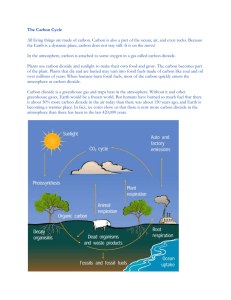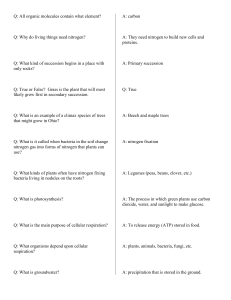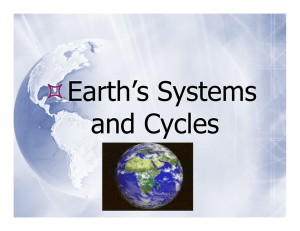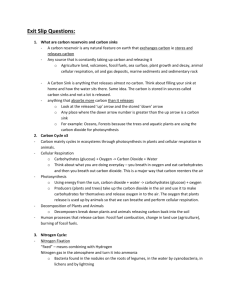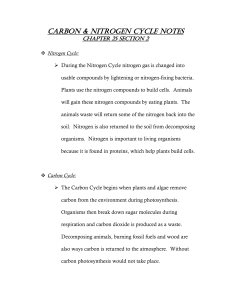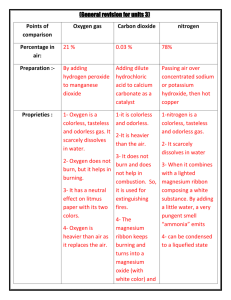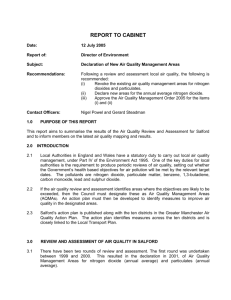Learning Outcomes for Test #5 Name: Unit 7, lesson 3 Test Date
advertisement
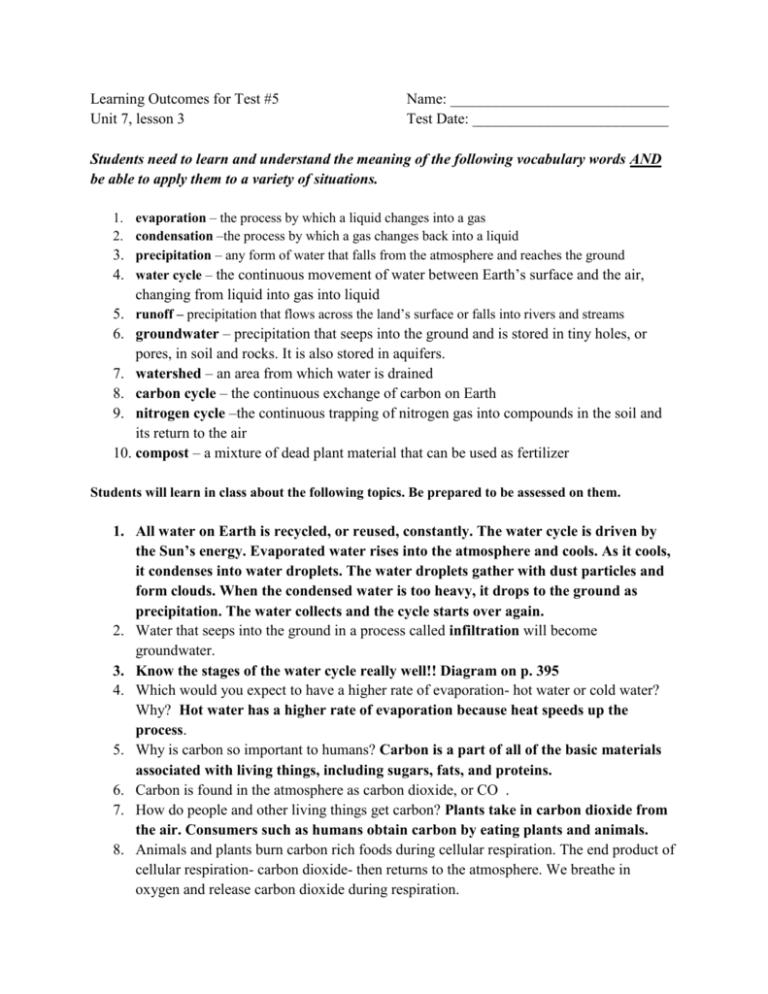
Learning Outcomes for Test #5 Unit 7, lesson 3 Name: _____________________________ Test Date: __________________________ Students need to learn and understand the meaning of the following vocabulary words AND be able to apply them to a variety of situations. 1. evaporation – the process by which a liquid changes into a gas 2. condensation –the process by which a gas changes back into a liquid 3. precipitation – any form of water that falls from the atmosphere and reaches the ground 4. water cycle – the continuous movement of water between Earth’s surface and the air, changing from liquid into gas into liquid 5. runoff – precipitation that flows across the land’s surface or falls into rivers and streams 6. groundwater – precipitation that seeps into the ground and is stored in tiny holes, or pores, in soil and rocks. It is also stored in aquifers. 7. watershed – an area from which water is drained 8. carbon cycle – the continuous exchange of carbon on Earth 9. nitrogen cycle –the continuous trapping of nitrogen gas into compounds in the soil and its return to the air 10. compost – a mixture of dead plant material that can be used as fertilizer Students will learn in class about the following topics. Be prepared to be assessed on them. 1. All water on Earth is recycled, or reused, constantly. The water cycle is driven by the Sun’s energy. Evaporated water rises into the atmosphere and cools. As it cools, it condenses into water droplets. The water droplets gather with dust particles and form clouds. When the condensed water is too heavy, it drops to the ground as precipitation. The water collects and the cycle starts over again. 2. Water that seeps into the ground in a process called infiltration will become groundwater. 3. Know the stages of the water cycle really well!! Diagram on p. 395 4. Which would you expect to have a higher rate of evaporation- hot water or cold water? Why? Hot water has a higher rate of evaporation because heat speeds up the process. 5. Why is carbon so important to humans? Carbon is a part of all of the basic materials associated with living things, including sugars, fats, and proteins. 6. Carbon is found in the atmosphere as carbon dioxide, or CO . 7. How do people and other living things get carbon? Plants take in carbon dioxide from the air. Consumers such as humans obtain carbon by eating plants and animals. 8. Animals and plants burn carbon rich foods during cellular respiration. The end product of cellular respiration- carbon dioxide- then returns to the atmosphere. We breathe in oxygen and release carbon dioxide during respiration. 9. The carbon cycle moves carbon through an ecosystem by respiration, photosynthesis, and decomposition. 10. Carbon dioxide is also returned to the atmosphere from decomposers that break down dead or decaying plants and animals, and when fossil fuels are burned. 10. What organisms and processes are involved in the oxygen-carbon dioxide cycle? Plants perform photosynthesis, taking in carbon dioxide from the air and releasing oxygen. Animals and humans take in oxygen to breathe. They eat the plants and perform respiration, releasing carbon dioxide into the air. 11. Nitrogen is another key element for all organisms. Nitrogen is found in the proteins that make up muscles, skin, nerves, bones, blood, and enzymes, as well as genetic material. 12. The nitrogen cycle is the continuous trapping of nitrogen gas into compounds in soil that can be used by plants, and its return to the atmosphere. 13. Nitrogen is fixed in the nitrogen cycle by lightning, volcanic activity, and nitrogen-fixing bacteria. Certain bacteria change some of the nitrates back into nitrogen gas in a process called denitrification. It allows the nitrogen cycle to continue. 14. How is a nonrenewable resource different from a renewable resource? Know some examples of each? Nonrenewable resources, such as oils and metals, cannot be replaced after being used; renewable resources, such as trees, can be used and replaced. 15. It is important to recycle natural resources because it helps reduce the amount of natural resources we use. Composting helps us reduce the amount of garbage we make and helps plants to grow bigger and faster by providing fertilizer. Composting is a way to recycle nitrogen.



